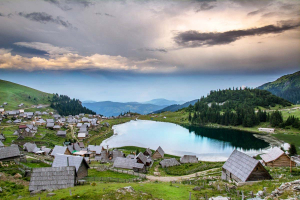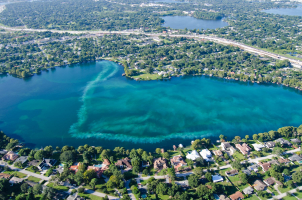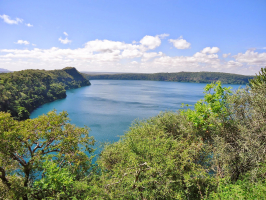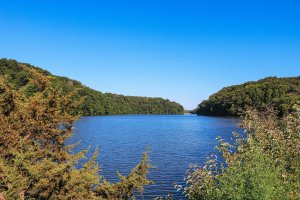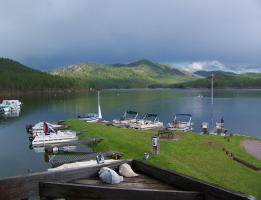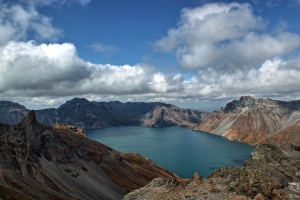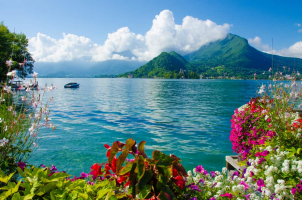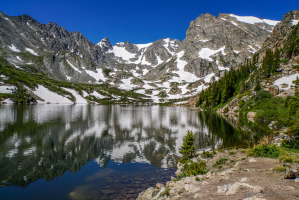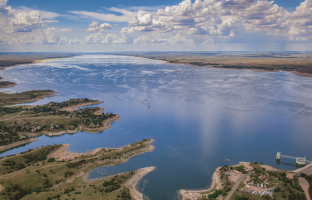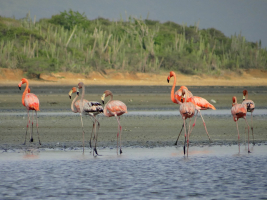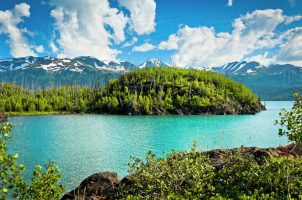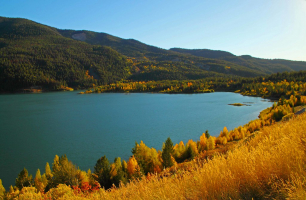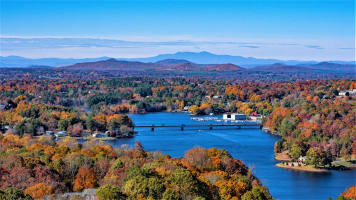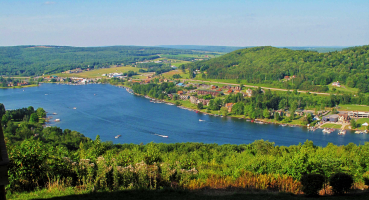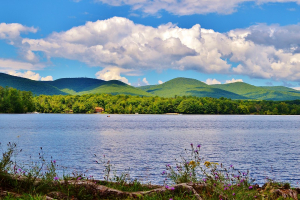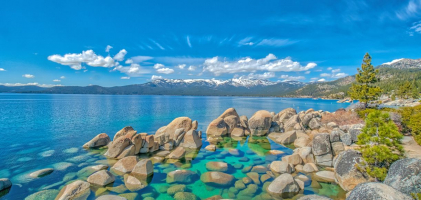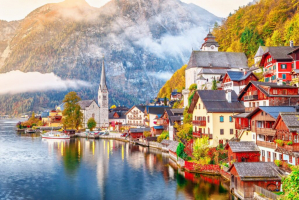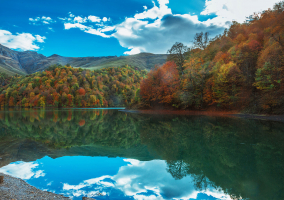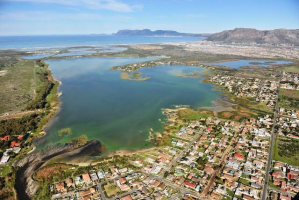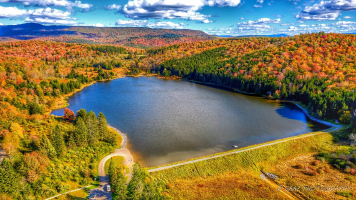Top 4 Best Lakes to Visit in Cuba
Cuba, the largest island in the Caribbean, is rich in tradition, culture, and seductive mystery. More than 5,000 kilometers of this immense island's shoreline ... read more...are bordered by stunning beaches, coral reefs that shimmer in the clear waters, and lovely lakes. And here are the best lakes to visit in Cuba.
-
For those who enjoy the outdoors, Lago Hanabanilla (Hanabanilla Lake) is perfect. This lake is considered one of the best lakes to visit in Cuba. It powers the turbines of Cuba's biggest hydroelectric power plant, which is situated in the municipality of Manicaragua, in the province of Villa Clara. It starts in the Macizo de Guamuhaya Massif and reaches Trinidad and Cienfuegos to the southeast. It is about 30 to 40 meters deep and 192 square kilometers in size. 364 meters above sea level is where it is situated. Tourists can admire the region's breathtaking beauty by taking the El Nicho path, strolling along the Ro Negro (The Black River), or visiting Cascada del Amor (Waterfall of Love).
Lago Hanabanilla snakes in and out of the steep, craggy fissures of the Escambray Mountain in a manner more akin to a slightly overflowing river than a lake. The serpentine Lago Hanabanilla, a lengthy 26-square-kilometer lake that is actually a reservoir, flows along the northern edges of the Sierra del Escambray. From every vantage point, looking down at the lake lies in its valley offers a breathtaking scene. The lake is not only stunning, but it also marks the transition from the rural area south of Santa Clara to the mountainous region it gradually becomes.
Many advise renting a boat to visit this lake, which is available at the hotel that shares the lake's name. Visitors can more easily view the intimidating slopes rising around them from a boat, as well as the fascinating underwater life below. From the hotel, there are a number of footpaths that lead to magnificent waterfalls that are shaded by the surrounding tall trees. The tranquil waters of Lago Hanabanilla offer a plethora of Cuban flora and fauna for nature lovers. For those who enjoy lake activities, the lake's 50-meter depth and 300 million cubic meters of water make it a special attraction that is also favored by the hotel's nautical amenities.
Location: Villa Clara
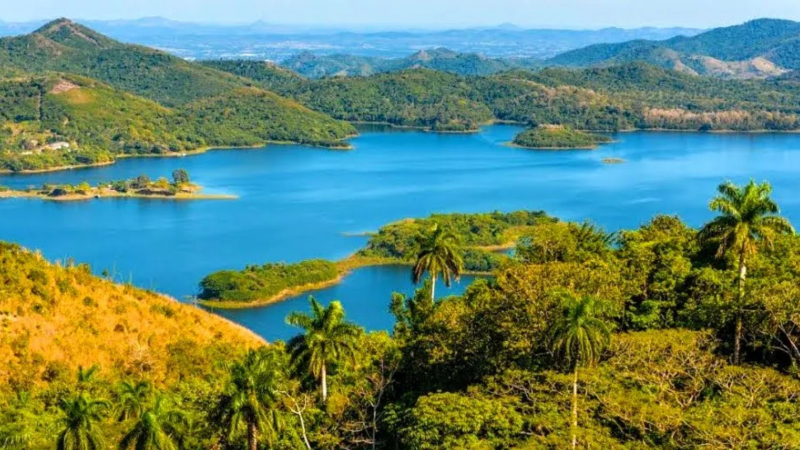
Photo: Cuba Travel 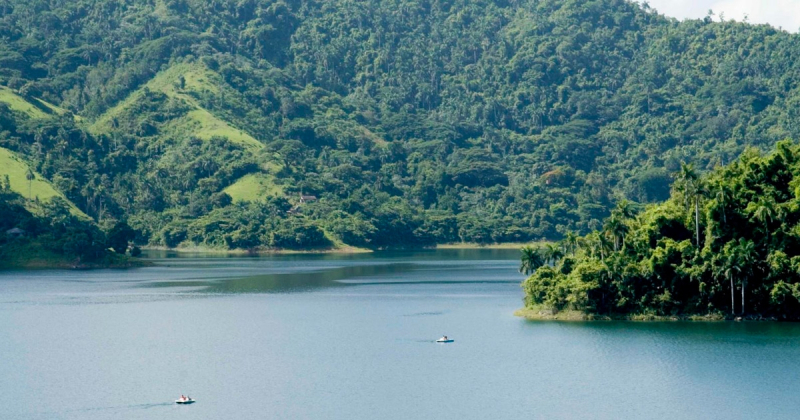
Photo: CubaConecta -
The Laguna Guanaroca is a stunning lagoon with tranquil waters that is a protected area, the only one in the area, and is surrounded by lush, green flora. It is created by the Rio Arimao and empties into Cienfuegos Bay in Cuba. Pink flamingo colonies, which cover the entire lagoon and can be seen all over the area, are the Laguna Guanaroca's most recognizable characteristic. Here, you may find the species' biggest population. The entertaining ducks are some other migratory birds you may encounter. The exquisite mangroves that adorn the shore can also be seen. A siboney myth states that the Guanaroca lagoon is the moon's actual earthly form. A knowledgeable guide will accompany you as you begin a short stroll along a route where you can see many native plant and animal species. After that, you can take a rowing boat ride in the lagoon to witness pink flamingo colonies and other migratory species that frequent this area.
While passing by the exotic mangroves that border the water's edge, tourists should keep a look out for a variety of species, such as herons, egrets, and cormorants. You can see the breathtaking sight of a pelican plunging out of the sky and splashing beak first into the water. But without a question, the pink flamingos that call this place home, particularly numerous between December and March, are the real stars of the show. In Cuba, getting up close to these graceful animals is an unexpected privilege. This is especially true if you encounter a big group of them taking flight and soaring overhead.
Location: Cienfuegos
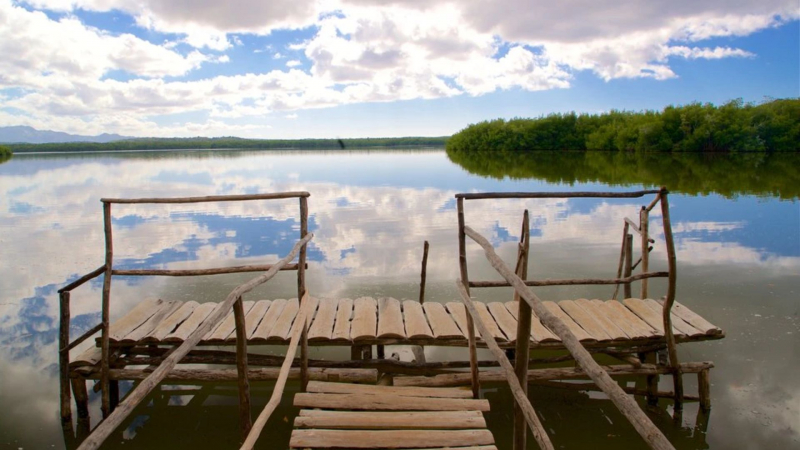
Photo: Expedia 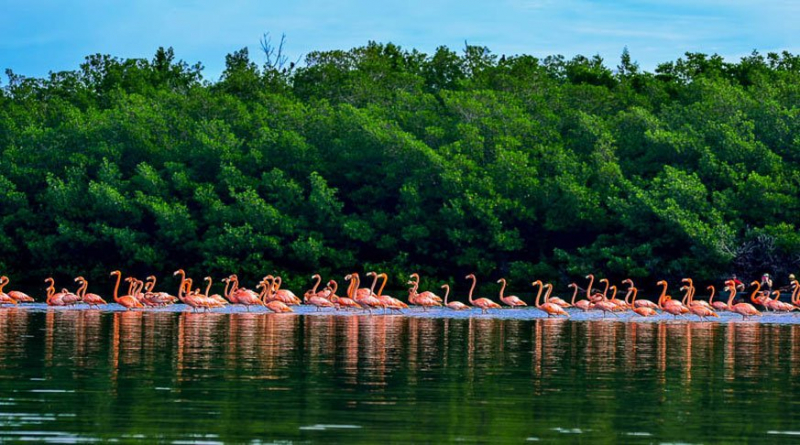
Photo: Easy Booking Cuba -
The third best lake to visit in Cuba is definitely Laguna del Tesoro. The Laguna del Tesoro or Treasure lake is located just in the heart of the Zapata Swamp, a huge wilderness area in southwestern Cuba. Boats can travel from Boca de Guama to the Laguna del Tesoro Lake along a waterway lined with thick flora. There are many trout in this lake's crystal-clear, 4 m deep waters, which has an area of 9 km2 and a diameter of 5 km. Cuba is a great destination for sports fishing and ecotourism. Legend has it that the native inhabitants sank a boat containing their most valuable goods in the lake to prevent the Spanish conquistadors from stealing their wealth because they thought they were in danger. Tourists can also see manatees and manjuari (Cuban gar), a living fossil that is only found in the Zapata Swamp and where fishing is prohibited along with trout.
The lake's four-meter depth makes it the ideal location for nature tourism and sport fishing, and its clear waters are home to many fascinating marine species, including golden trout. Its surroundings include the well-known Taino Village, a creation by Cuban sculptor Rita Longa, which depicts the way of life and traditions of the indigenous tribes, including the statue of Chief Guamá. Villa Guamá, a tourist destination with housing options, restaurants, and bars where patrons may sample cuisine based on fish and reptiles, is one of the attractions of the Laguna del Tesoro. Entering the Laguna del Tesoro is like traveling back in time to when the ancestors lived, where you may take in the scenery and the clean air that nature provides in this region of Cuban topography.
Location: Southwestern Cuba
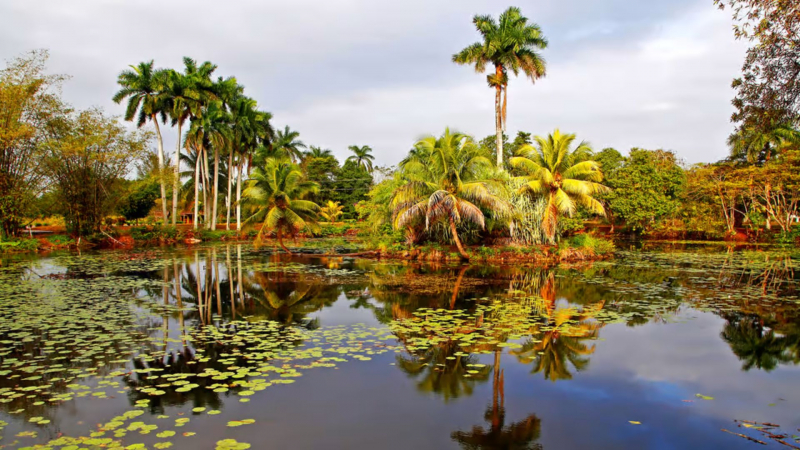
Photo: Futura - Sciences 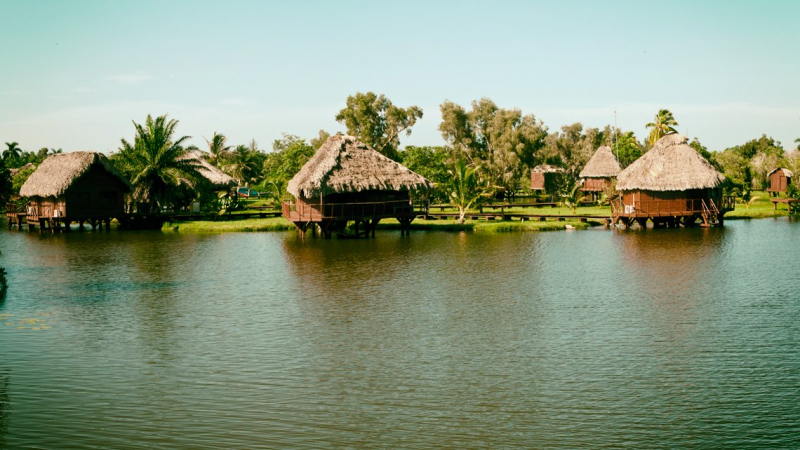
Photo: Online Tours -
The settlement of Moron and the Laguna Grande of Morón, commonly known as Laguna de la Leche, are located in the Ciego de Avila province in central Cuba. Its waters' unusually milk-like whiteness is how it got their amusing name. The calcium sulfate and gypsum found at the lake's bottom, which are responsible for its unusual coloring, are thought to be the source of this phenomena. This magnificent location has an 8-mile diameter, an approximate 9-foot depth, and communicates with the sea on its northern side, offering a variety of delightful sceneries to people who visit. The area has a variety of highly beneficial trees in its flora, including occuje, oak, red mangrove, patabán, and palm trees, as well as a variety of duck species, yaguazas, coras, manatees, and caimans, among other animals. Golden snapper, dolphin, shark, and mullet are among the marine species.
The Morón Yack Club y La Atarraya, a bar-restaurant perched on stilts in the water and a sizable ranchón where you can currently enjoy delectable seafood, fish, and paella dishes, is one of the locations to enjoy Laguna de la Leche. There are more dining and entertainment options, such as the underground nightclub Cueva. The summertime water carnivals in Laguna de la Leche, a long-standing custom in which the boats that take part in competitions and parades of colors, music, and choreography are adorned, are the most notable aspect of the city. The Museum of Archeology and History, the Railroad Terminal, the ruins of La Trocha de Júcaro a Morón, and other fascinating city locations are all close to Laguna de la Leche and provide an additional draw to make the journey much more enjoyable.
Laguna de la Leche is a unique location in Cuban geography that is rich in history and natural beauty. Here, you may see firsthand the wealth of the Island of Cuba and its stunning landscapes. You can stay in one of our houses in the provinces of Ciego de vila, Trinidad, or Camagüey for convenient access to this fascinating and unique destination, where superb treatment and outstanding service will encourage you to return.
Location: Ciego de Avila province
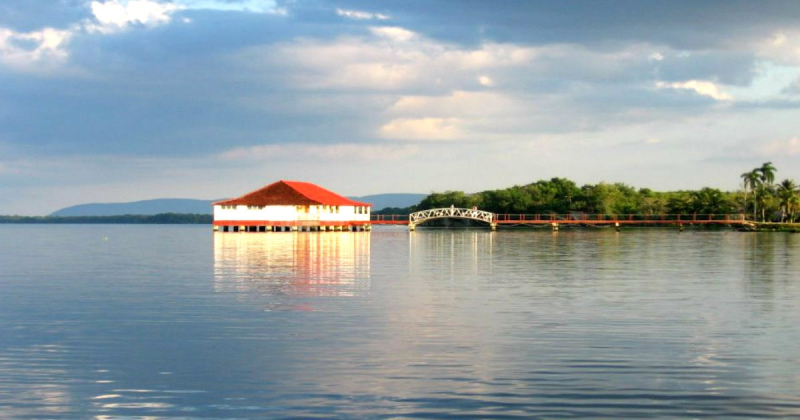
Photo: Cuba Entérate 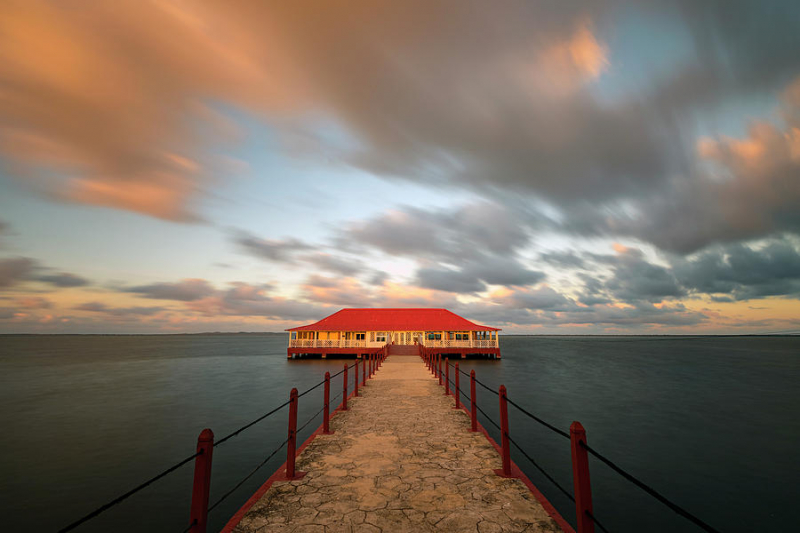
Photo: Pixel






